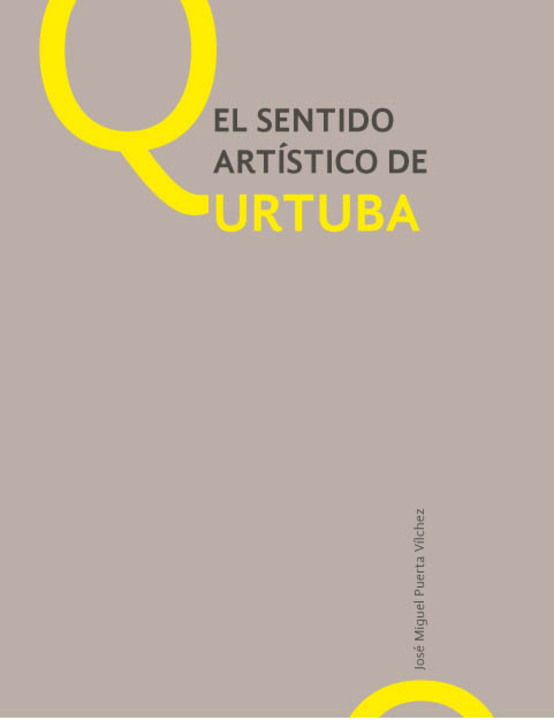Books and publications
Index / Activities / Books and publications / The artistic sense of Qurtuba
The artistic sense of Qurtuba
December 02, 20156:00 p.m.
CóRDOBA
Casa Árabe Auditorium (at Calle Samuel de los Santos Gener, 9).
6:00 p.m.
Free entrance until the event’s capacity is reached.
In Spanish.
An Arabist and professor in the Art History Department at the University
of Granada, José Miguel Puerta Vílchez is introducing his latest work.
The eighth to thirteenth centuries in Qurtuba were, as we are well-aware, one of the most fertile and transcendent times in classical Arab culture and in the history of Spain, the intellectual and material legacy of which not only covers a large part of the Iberian Peninsula, but also other countries in the Mediterranean. Moreover, it is currently a subject of international admiration and interest.
In this book, an overview is provided of the historical and artistic values of the most important monuments in the Qurtuba of Al-Andalus, above all the Great Mosque of the West and Madinat al-Zahra’, as well as its splendid manufacturing centers (stone, metals, jewelry, wood, ivory, pottery, fabrics, book-making arts). The book places a special highlight on writing and calligraphy, and the formal and semantic relationships among the various arts of Qurtuba and the craftsmen who created them.
Accompanied by an amazing array of photographs, the book allows us to get a glimpse of the formal and semantic relationships existing between the diverse components within the vast, subtle production of art in Qurtuba and to understand the motivations and concepts of the patrons, artisans and scholars who created it. Sharing the common bond of writing and calligraphy, matrix for the arts in classical Arab civilization, as its vehicle for expressing ideological and aesthetic contents, the author invites us to interpret this legacy beyond compare in the history of art and culture in a new way. Concise, brief, useful and practical, this story can also be used as a guide to the region’s culture and politics.
José Miguel Puerta Vílchez
An Arabist and professor in the Art History Department at the University of Granada, Puerta Vílchez has also published Los códigos de utopía de la Alhambra de Granada (The Codes of Utopia at the Alhambra of Granada, 1990), Historia del pensamiento estético árabe (History of Arab Aesthetic Thought, 1997), La aventura del cálamo (The Adventure of the Calligraphy Pen, 2007), Leer la Alhambra (Reading the Alhambra, 2010) and La poética del agua en el islam (The Poetics of Water in Islam, 2011). Most notable amongst his translations are the essay by Adonis, Sufismo y surrealismo (Sufism and Surrealism, 2008) and the books by Ghada Sammán, Beirut 75 (novel) and La luna cuadrada (The Square Moon, a book of fantasy tales which won the Andalusian Translation Award of 2008). He was also the co-director and editor of the Al-Andalus Library (9 volumes published from 2003-2013) and the curator of the exhibitions Doce candiles para Granada (Twelve Candles for Granada) by Palestinian painter Kamal Bullata and Syrian poet Adonis (Granada, The Alhambra Board of Trustees, 1998), Libertad e innovación. Caligrafía árabe contemporánea (Freedom and Innovation: Contemporary Arabic calligraphy, Casa Árabe, Madrid-Cordoba, 2010–2011) and Artes y culturas de al-Andalus. El poder de la Alhambra (Arts and Cultures of Al-Andalus: The power of the Alhambra, Granada, The Alhambra Board of Trustees-El Legado Andalusí Foundation, 2013-2014).
In this book, an overview is provided of the historical and artistic values of the most important monuments in the Qurtuba of Al-Andalus, above all the Great Mosque of the West and Madinat al-Zahra’, as well as its splendid manufacturing centers (stone, metals, jewelry, wood, ivory, pottery, fabrics, book-making arts). The book places a special highlight on writing and calligraphy, and the formal and semantic relationships among the various arts of Qurtuba and the craftsmen who created them.
Accompanied by an amazing array of photographs, the book allows us to get a glimpse of the formal and semantic relationships existing between the diverse components within the vast, subtle production of art in Qurtuba and to understand the motivations and concepts of the patrons, artisans and scholars who created it. Sharing the common bond of writing and calligraphy, matrix for the arts in classical Arab civilization, as its vehicle for expressing ideological and aesthetic contents, the author invites us to interpret this legacy beyond compare in the history of art and culture in a new way. Concise, brief, useful and practical, this story can also be used as a guide to the region’s culture and politics.
José Miguel Puerta Vílchez
An Arabist and professor in the Art History Department at the University of Granada, Puerta Vílchez has also published Los códigos de utopía de la Alhambra de Granada (The Codes of Utopia at the Alhambra of Granada, 1990), Historia del pensamiento estético árabe (History of Arab Aesthetic Thought, 1997), La aventura del cálamo (The Adventure of the Calligraphy Pen, 2007), Leer la Alhambra (Reading the Alhambra, 2010) and La poética del agua en el islam (The Poetics of Water in Islam, 2011). Most notable amongst his translations are the essay by Adonis, Sufismo y surrealismo (Sufism and Surrealism, 2008) and the books by Ghada Sammán, Beirut 75 (novel) and La luna cuadrada (The Square Moon, a book of fantasy tales which won the Andalusian Translation Award of 2008). He was also the co-director and editor of the Al-Andalus Library (9 volumes published from 2003-2013) and the curator of the exhibitions Doce candiles para Granada (Twelve Candles for Granada) by Palestinian painter Kamal Bullata and Syrian poet Adonis (Granada, The Alhambra Board of Trustees, 1998), Libertad e innovación. Caligrafía árabe contemporánea (Freedom and Innovation: Contemporary Arabic calligraphy, Casa Árabe, Madrid-Cordoba, 2010–2011) and Artes y culturas de al-Andalus. El poder de la Alhambra (Arts and Cultures of Al-Andalus: The power of the Alhambra, Granada, The Alhambra Board of Trustees-El Legado Andalusí Foundation, 2013-2014).
Casa Árabe
Edilux publishing firm

